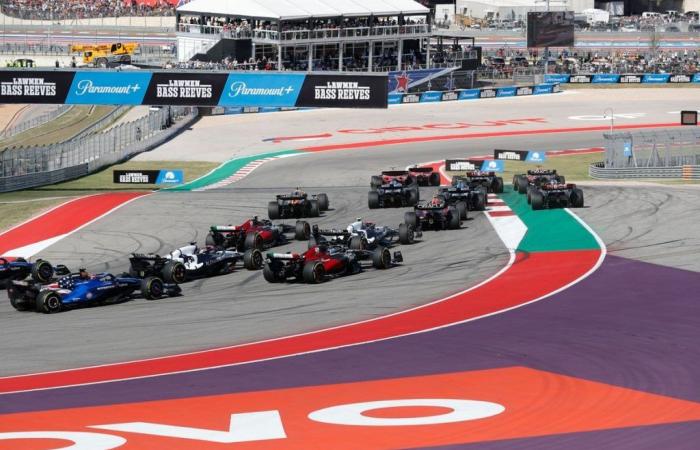According to information from Motorsport.comthe organizers of the United States Grand Prix have decided to take a series of measures to circumscribe the problem of track limits at the Circuit of the Americas (COTA), in preparation for the event which will be held from October 18 to 20.
As has often been the case over the past 12 years, the track near Austin has been resurfaced for the upcoming GP, to try to reduce the many bumps caused by the instability of the terrain on which the facility was built. Those responsible for the route therefore took the opportunity to implement solutions to limit drivers going off-track.
The issue was raised last year during a protest filed by Haas following what the team considered to be numerous infractions of the rules on the subject which had not been punished. The request was rejected by the stewards, but the excesses observed without being sanctioned led to discontent from other structures, the FIA recognizing after analysis of the videos that there was work to be done to try to improve this.
It is in this context that COTA has therefore introduced several modifications intended to prevent the 2023 scenario from repeating itself.
Initially, certain asphalt track edges were made narrower by 1.5 meters and replaced with grass so that drivers were less tempted to pass over them. These are the inside of turns 6, 13, 14 and 15. Cameras have also been added in turns “strategic locations” in order to better keep an eye on exceeding track limits.
Yuki Tsunoda, AlphaTauri AT04
Photo de: Red Bull Content Pool
A change was also made at the exit of turn 11, the left-hand hairpin that controls the return straight. The off-track asphalt area has been provided with a location where a “false gravel trap” will be housed, namely a resin mat on which gravel is stuck to discourage drivers from passing through without risking the runway becomes dirty in the event of passage offshore. This solution was used for the first time in Zandvoort in 2022.
With the need to make compromises in the area of safety due to the arrival on the MotoGP COTA route, these changes were above all decided as part of an experiment carried out for the 2024 edition of the F1 GP.
Austin race promoter Bobby Epstein said: “There are places where it’s difficult because, if you run MotoGP and F1 on the same track, one will want gravel in an area where the other doesn’t want it. We can’t you can’t have both, and you can’t cut up the track and put gravel on it, then turn it over and hope it stays waterproof when there’s clay underneath. So there are challenges to be faced in that. one way or the other.”
Other vibrators have also been replaced, with drainage added to help improve things in wet conditions.
Regarding resurfacing, Epstein explained: “It was mainly about getting rid of the bumps. Part of this track was 12 years old, so it was about time. I know Max [Verstappen] gave it a rather negative review last year. So I hope we hear something positive. I’m sure we’ll hear, ‘It’s a whole new circuit. It’s fantastic.”
With Jonathan Noble






